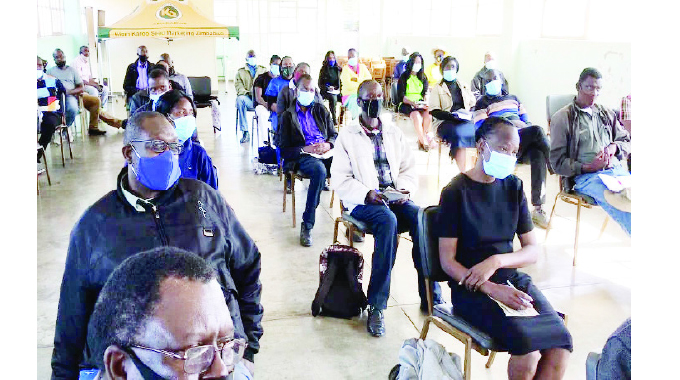
Sukulwenkosi Dube-Matutu, Chronicle Reporter
THE Ministry of Lands, Agriculture, Water and Fisheries will spearhead a programme for the local production of vaccines for tick-borne diseases to reduce the import bill and to boost production of livestock in the country under the livestock growth plan.
The programme will run together with a US$21 million scheme to rehabilitate and construct dip tanks countrywide.
A bull and semen bank will also be established to maintain prime stock.
The livestock growth plan is part of the agriculture food systems transformation strategy which seeks to achieve an US$8,2 billion agriculture economy by 2025 to ensure attainment of Vision 2030.
Finances for the projects under the growth plan will be raised through collaborative effort between the public and private sectors as well as development partners.
Presenting a livestock growth plan document during a training programme for Matabeleland South Province district extension officers in Gwanda recently, provincial livestock specialist, Mr Hatitye Zondai said the ministry will also establish a vaccination production plant to control foot-and-mouth disease (FMD) outbreaks.
“The ministry will spearhead the local production of vaccines for tick-borne diseases in order to reduce the import bill. The Department of Veterinary Services will engage a FMD vaccination expert to carry out a detailed feasibility study on the establishment of the FMD vaccine production plant to guide the rollout.
“The livestock growth plan has been crafted to address challenges that are affecting development of the livestock sector by rolling out sustainable solutions with support from Government, the private sector and development partners. The growth of the livestock sub-sector is characterised by low production and productivity and evidences by low off-take, low fertility, high mortality, low carcass weight, poor quality and inability to effectively compete on export markets,” he said.
Mr Zondai said the major challenges affecting the livestock sector were associated with animal health, availability of adequate nutrition (feed, pastures, fodder and water), genetics improvement issues, access to infrastructure suitable for accessing lucrative domestic, regional and international markets and inadequate financial resources.
He said interventions under the livestock growth plan include improved artificial genetic through artificial insemination.
“The focus will be on establishing a bull and semen collection and processing centre of facility preferably at Mazowe Veterinary Station. The centre will produce and distribute semen to provinces through satellite semen collection and distribution centres.
“The farmers will be trained to manage their animals before and after artificial insemination. This centre will complement efforts that are currently being done by the Zimbabwe Agricultural Society, Chinhoyi University of Technology and other private players,” said Mr Zondai.
He said the ministry will set out a FMD fencing programme where a 1 600 kilometres perimeter fence will be erected in order to help control FMD and solve the human and wildlife conflict.
Mr Zondai the initial plan was to erect a 230 kilometre electric FMD control fence around Gonarezhou National Park which is the hottest FMD spot in the country. He said the programme will also target Hwange, Chizarira and Chirisa National Parks.
“Another intervention strategy is the dip tank rehabilitation programme. Zimbabwe has 3 972 communal dip tanks. The growth plan will rehabilitate 2 637 dip tanks and build 207 new dip tanks so as to decongest farmers at service delivery points and improve animal health and production.
“This programme will require estimated total funding of US$20 890 000 for a Borehole Drilling Programme. A total of 920 boreholes will be drilled to ensure constant availability of water at identified dip tanks. The growth plan also seeks to strengthen the enforcement of animal movement regulations and intensify mounting of static and roving veterinary checkpoints,” he said.
Mr Zondai said another strategy was the commercialisation of small stock production, particularly goats, sheep and piggery through small stock breeding and genetic improvement centres and champion farmers. — @DubeMatutu.
